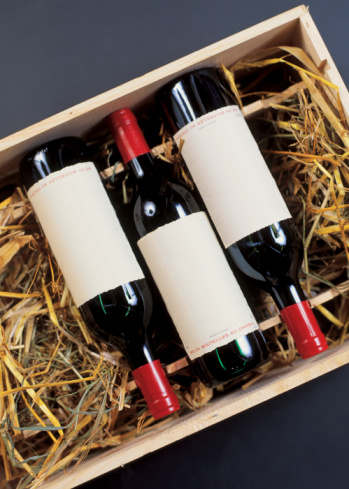Burgundy is Not Just a Color

- SUBSCRIBE
- ALREADY SUBSCRIBED?
BECOME A BONJOUR PARIS MEMBER
Gain full access to our collection of over 5,000 articles and bring the City of Light into your life. Just 60 USD per year.
Find out why you should become a member here.
Sign in
Fill in your credentials below.

I am sitting with my buddy and fellow restaurateur Joe Hoggard at a great bar in Juan-les-Pins, a very small seaside resort in the South of France, sipping a terrific Domaine de la Romanée-Conti Burgundy (wine details to follow), watching young couples whizzing by on their Vespas as the Côte d’Azur glimmers in the background….Eh….actually, Joe and I are sitting at the bar in The Ship’s Cabin, a restaurant he used to own in Ocean View, Virginia, drinking the house red and trying to figure out how to get some dough together to GET to the South of France…..But…as they say, that is another story.
Bulletin: THIS JUST IN………August 6, 1395…Duke Philip the Bold (1342-1404) publishes ordinance governing wine quality in Bourgogne.
Ah, the joys of the juice from Burgundy, a region in the central-eastern area of France. The most famous Burgundy red and white wines are made from Pinot Noir (red) and Chardonnay (white) grapes in the valleys west of the Saône River. The exceptions are the Chardonnay-dominated Chablis and the Gamay-dominated Beaujolais, although in a part of the Burgundy region they are usually referred to by their own names.
Just as a reminder–France, Italy and other great wine-producing states package their wines according to the region or estate that producers it, unlike the good old U.S.A, which names its wines by grape, thus our Pinot Noir becomes France’s Burgundy.

DRC (Domaine de la Romanée-Conti) is an estate in Burgundy that produces white and red wine (the wine of our dream scenario above). It is widely considered to be among the world’s greatest wine and DRC bottles are among the world’s most expensive. It takes its name from the domain’s most famous vineyard, Romanée-Conti. The roll call for these DRC wines is: Romanée-Conti, La Tâche, Richebourg, Romanée-St-Vivant, Grands Échezeaux and Échezeaux–all Pinot Noir grapes–and Montrachet, which is a Chardonnay.
Not sitting on the shelf next to DRC (but terrific Burgundys nonetheless) are wines from the Mâconnais region, which produces easy-drinking and affordable wines; south of this region is Beaujolais, known for its fruity Gamay wines.
But getting back to the high-rent district: the Côte d’Or is the home of all the Grand Cru vineyards with the exception of Chablis Grand Cru. The Côte de Nuits contains 24 Grand Cru appellations, while the region’s white Grand Crus are cultivated in the Côte de Beaune. “Côte” means slope. It has nothing to do with a coast, sea shore or river bank. In order to get more sun into the grapes and to drain the vines, winemakers grow vines on the hills towards the south and the southwest.

The first Burgundy vineyard was founded around 910, planted by the Benedictines. If you can imagine the haze, the monks’ chants, the dankness and the smell of incense while drinking a fine Burgundy, now that was the life.
In 1855 Dr. Jules Lavalle published his highly regarded wine book, Histoire et statistique de la vigne des grands vins de la Côte-d’Or, which included an unofficial classification of the Burgundy vineyards in five classes. In decreasing order, Lavalle’s five classes are hors ligne, tête de cuvée, 1ère cuvée, 2ème cuvée and 3ème cuvée.
Over the past seventy-five years Burgundy wine has gone through enormous changes, including the financial depression of the ’30s, World War II, and phylloxera, which wreaked havoc on the region. After World War II, the vignerons (a vigneron is someone who cultivates a vineyard for winemaking) returned home to their unkempt vineyards. The soils and vines were devastated. The vignerons began to fertilize, bringing their vineyards back to health. Those who could afford it added potassium, a mineral fertilizer that contributes to vigorous growth. By the mid-1950s, the soils were balanced, yields were reasonably low and the vineyards produced some of the most stunning wines in the 20th century.
Most of the “first class” vineyards of the 1855 classification were made into Grand Cru wines. “Growth place” is the literal translation of Cru; more specifically, Cru is often used to indicate a specifically named growth place, rather than any vineyard. In 1936 Appellations d’origine contrôlée (AOC) was established. The levels of Burgundy wine classification in descending order of quality are: Grands crus, Premiers crus, appellations villages, and finally appellations régionales. We sometimes refer to Premier and Grand Cru wines as “Great Growth” and “First Growth”.
Grand Cru wines are produced from a small number of the best vineyard sites in the Côte d’Or. Premier Cru wines are produced from specific vineyard sites that are still considered to be of high quality, but not as well regarded as the Grand Cru sites. Village appellation wines are produced from a blend of wines from supposedly lesser vineyards within the boundaries of one of 42 villages, or from one individual but nonclassified vineyard, and regional appellation wines are wines which are allowed to be produced over the entire region, or over an area significantly larger than that of an individual village.
In the final analysis, it’s clear that wines from Burgundy have history, history and more history. So when you raise a glass, remember the clanging of bells in the monasteries, the smell of incense the ancient monks used while performing mass, and the sound of horses’ hoofs rounding the dusty road carrying a case or two of 1510 Domaine de la Romanée-Conti.
Take trips, not chances. For peace of mind each and every time you travel, enroll for MedjetAssist evacuation services.
More in Bonjour Paris, Food Wine, France, wine stores


